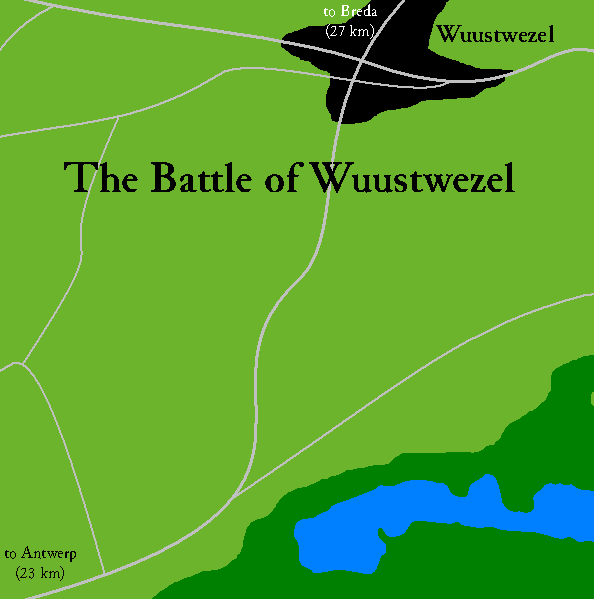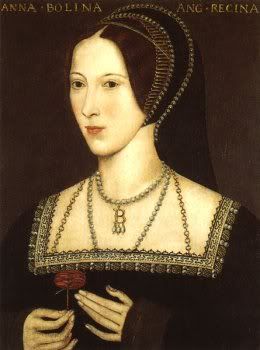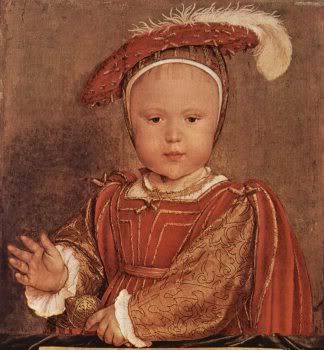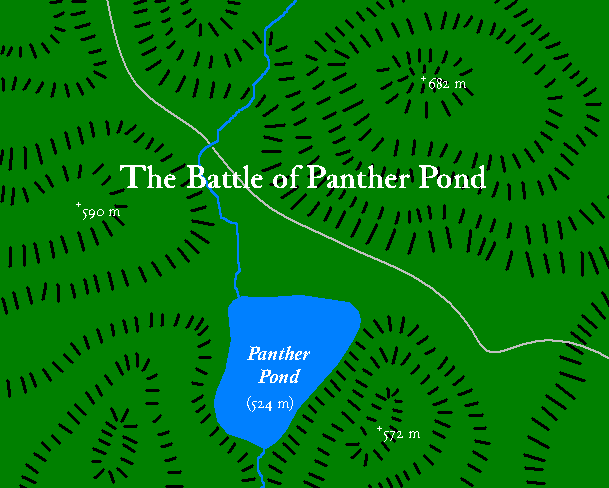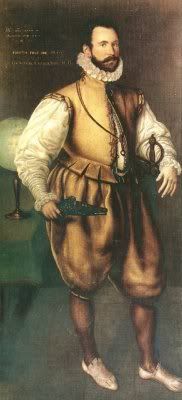canonized: Elizabeth... oh, yes, Elisabeth is going to be even more fun.

- - - - - - - -
The sudden shifts involved in the switch of England from a Catholic nation to having its own national church caused considerable chaos throughout the country. There were enough Protestants in the country to provide a stable base from which to encourage others to accept Henry as head of the Church of England; a majority already appeared in London and the Midlands. England's alliance with France was immediately dissolved by the French king, who might have tried to seize Calais if the strong garrison there had not discouraged him from trying. Most Catholics in England itself agreed to let things go, but there were two trouble areas.
The first was Henry's own court. Highest in profile of those who refused to take an oath upholding the Act of Supremacy was Thomas More, who had been so zealous in fighting earlier Protestant influences. Arrested on 17 June, he was held in the Tower of London for more than a year until, on 1 July 1535, he was found guilty of high treason. Five days later, he was executed by beheading (Henry himself had asked that the less painful method be used).
The second was Holland. At this point the region was still Catholic, but there were enough Protestant leanings to prevent most of it being a problem. Where trouble was stirred up was in the region of Zeeland and northern Brabant, where a band of Catholics revolted with the encouragement of the independent Prince-Bishop of Liege. Soon to become known as the "Pilgramage of Grace", this rebellion became a severe threat to English authority in the region.
In response, Henry sent in a small army under the Count of Zeeland and Stateholder of Holland, Anthony (Antoon) van Lalaing. Van Lalaing was not a particularly skilled commander, and after being outmaneuevered horribly he slipped north to Holland in April of 1534. Incensed, Henry removed his position as Stateholder of Holland and put the army under the command of John Lyon, the Lord of Glamis, with 15,000 men. It was an impressive army, almost twice the size of that of the Bishop of Liege; the two met near Wuustwezel, near Antwerp, on 23 July 1534.
The two armies set up in an open field, where Glamis' larger numbers should have told the day. But the Bishop of Liege had two advantages: his army was somewhat more heavily equipped, with more cavalry, and he had on his side one cannon capable of doing some damage. Liege also split his army into two, forcing Glamis to do the same and take away some of the force behind his attack. Said attack came too slowly, allowing the cannon to do its work, and then Glamis realized he had fallen into a trick: One end of the line was slightly further back than the other, allowing a deadly enfilade at the split in the center.
Now things began to fall apart for the English. Within minutes of the battle opening, a stray cannonball struck Glamis dead, and the combination of that and the casualties being suffered stopped that attack dead. At this point Liege charged, completely dissolving the English left flank, and leaving the other flank high and dry. It was only a few minutes until that flank was overwhelmed, the infantry cut down or captured as they attempted to flee. Only about half the English army limped back north to Haarlem, leaderless and shocked.
The Battle of Wuustwezel. Each line is c. 1000 men.
Henry was enraged; success by Catholics in Zeeland could potentially encourage rebellion in England as well (the north was already looking tenuous), not to mention gaining the attention of the French king. It took several months for another army to be organised, this time under the Duke of Norfolk, but by the time they marched south the Bishop of Liege now faced 20,000 men. By 18 October the rebels had been defeated, the Bishop of Liege killed in battle, and a new, Lutheran bishop put in his place. Said bishop was only too happy to become a part of the Duchy of Holland and Friesland.
Despite the eventual success of the campaign, it still hurt Henry's position in England. Only quick thinking on the part of Cromwell prevented potential rebellion on the island itself; the slow reformation of the English church was stopped, leaving it as an odd half-Catholic denomination which was able to soothe the fears of the more conservative people in the population. The country slowly stabilised, and Henry could deal with other problems. The first was the matter of Wales; the Welsh elements in Parliament, having a disproportionately high representation, often caused problems in passing legislation. On 26 November 1536 Henry basically forced in a Welsh Act of Union, dissolving the Kingdom of Wales and appending it to England. This Act gave Wales power in Parliament in proportion to its size, a severe blow if technically fair.
Another problem was what had driven Henry to reform in the first place, his marriage. First, Henry himself was never entirely devoted to his wife, still dallying around with other women. Second, Anne ended up having the same problem as Catherine: No sons were being born. Only one daughter (Elisabeth) survived infancy; two more miscarried sons are known, and there may have been others. In any case, Henry was becoming as impatient as before.
Anne Boleyn, by an anonymous painter (1535).
With the last miscarriage in 1536, Henry had had enough. After torture, a Fleming named Smeaton confessed to adultery with the queen, and three other names were given, along with Anne's own brother, George. None of their charges stood up well to scrutiny, but there was enough to convict them and, by 15 May 1536, Anne herself. The men were executed two days later, and Anne on the 19th. Henry would have to find another wife.
Said wife was Margaret Greifen, daughter of Duke Georg I of Pommerania. Georg had recenty converted to Protestantism, and a dynastic relation to the Kingdom of England would prove quite useful. On 1 April 1537 she and Henry were married in Reading. A bout of plague prevented her from being crowned in London as queen; instead, Henry set to consummating the marriage, an action which was proven eminently successful a few weeks later. In early January 1538, she gave birth to an apparently (or at least relatively) healthy son, Edward.
Prince Edward, by Hans Holbein, 1538.
Henry was overjoyed as the child began to show signs of surviving. His joy quickly turned into sadness, however, as Margaret slowly succumbed to complications from the birth. She died on 24 January, leaving Henry in shock. Despite this, he decided not to remarry at first; he had enough trouble dealing with the rapidly growing Catholic daughter Mary and Protestant daughter Elisabeth. Henry decided to devote as much time as possible to raising Edward to be a good son, but even this soon proved to be a problem. Edward, who had appeared such a healthy child, contracted a fever late in 1538 and was caught in it for months. Panicking, Henry decided to marry again to ensure the succession.
Jadwiga Przemyslowa, by Wincenty Lesseur (1803)
This marriage was to Jadwiga, daughter of King Zygmunt I of Poland and Lithuania. Zygmunt had been another recent convert to Protestantism, and a marriage to the nation that was rapidly being seen as the main Protestant nation of Europe was very much in his wishes. The marriage was performed in February of 1539, and it appeared as if Henry would have another chance at a son.
At this he was to be severely dissapointed again with his wife. He had recieved a painting by Hans Holbein of the woman he was to marry (not unlike the one given above) which showed her as quite beautiful. Instead, what he found was a woman ugly beyond belief, so much so that he was unable to consummate the marriage. By 9 July 1539, both had agreed to an annulment, granted by Archbishop Cranmer. Jadwiga was granted several estates through England, including the old Tudor castle at Richmond.
Meanwhile, trouble appeared in England itself. The Welsh were not very happy with the Act of Union three years earlier, and in January revolts had surged througout the region. This was to be the last gasp of Welsh nationalism, with Norfolk's army easily crushing the rebels. Welsh culture had become too strong for the land to become Anglicised, but their political power was at an end.


